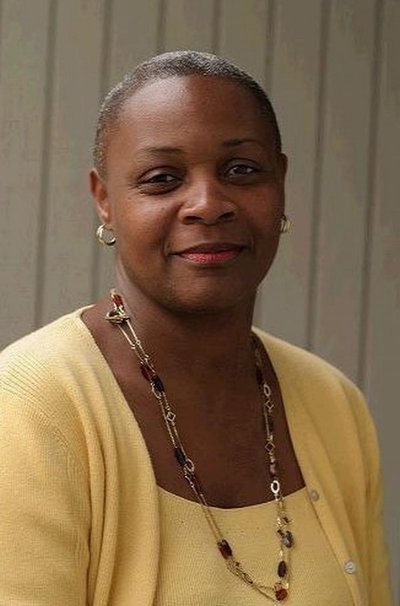October 21, 2010
New ‘Diversity Blueprint’ is the beginning of a process, Lange says
The Diversity Blueprint, which articulates a set of priorities for achieving an integrated vision for campus diversity, is really the beginning of a process that must be implemented at the grass roots in order to succeed, according to Sheila Edwards Lange, vice president and vice provost for minority affairs and diversity.
“This is a blueprint — a ‘plan to plan,'” Lange says. “Given the decentralized nature of UW governance and our current budget challenges, we decided that the best way to achieve goals regarding diversity was to provide resources, a framework and metrics for judging success.”
“Moving forward, we must work toward greater inclusion of diversity into all aspects of University life,” says interim president Phyllis Wise. “As with all our pursuits, we must look to those areas where we can have the greatest impact with existing and future resources and make strategic decisions. The Diversity Blueprint presents us with a guide to do so.”
The blueprint, available at http://www.washington.edu/diversity/blueprint/, is the product of two years’ work by the Diversity Council, a broad-based group drawn from many University units across all three campuses. The blueprint outlines a number of overall diversity goals for the University, but the intent is for each unit to develop plans that focus on the goals that it considers most important. The blueprint is structured in such a way that it does not necessarily demand the allocation of new resources. “In the future, we’ll need to work smarter and more collaboratively,” Lange says.
Historically at the UW, and at most universities, the most energy has focused on student recruitment and retention. But the council identified other areas as facing even greater challenges: enhancing faculty diversity, encouraging diversity research, integrating diversity topics across the curriculum, and improving the campus climate for minority students and faculty.
Lange singled out diversity research as an area of both great challenges but also great opportunities. “We are in a fortunate time. Many federal funding agencies are interested in research that focuses on what are called ‘grand social challenges,’ historical inequities and disparities that exist in our society. And even those agencies that are not explicitly funding diversity research are interested in expanded outreach efforts that reach diverse communities.”
Similar opportunities may exist on curricular issues, with recent changes in the Teaching Academy and the Center for Instructional Development and Research and its ongoing collaboration with the Center for Curriculum Transformation. Lange says curriculum changes occur most readily in an environment characterized by these kinds of collaborations. She points to the Simpson Center for the Humanities as a place that has pioneered changes in curriculum, driven in part by the fact that it draws (and serves) faculty from a variety of disciplines.
“The blueprint draws from successful examples such as the Simpson Center, and points out ways to engage people with similar interests across campus. The days of working in isolation, within single units, to meet diversity goals are gone. We will need to work together to assure that our students are prepared to be global leaders,” she says.
Lange and the Diversity Council have worked to align the blueprint’s goals with the “2Y2D” project, which essentially is a University business plan for the next two decades. Goals such as hiring more faculty whose work crosses disciplinary boundaries, for example, have many tangible benefits for the UW, one of which potentially is addressing issues of diversity.
Identifying metrics for measuring key goals is an emphasis of the blueprint. One way of making units accountable for working toward the goals that they set is by publishing metrics periodically that demonstrate whether progress is being made, Lange says.
The blueprint already has been reviewed at many levels of the administration, including the Board of Deans, vice provosts and vice presidents. It is being presented to groups of staff and students, to the Faculty Council on Multicultural Affairs and also to the Faculty Senate as a whole.
“We see collaborations that already are developing among units represented on the Diversity Council,” Lange says. For example, the School of Public Health recently completed a climate study that is being used as a model for other units. Other academic units are studying the diversity plans developed by the iSchool and College of Engineering. There is much we can learn from one another.”
The council itself intends to act as a resource for campus units as they set their own goals and try to find best practices. In addition, the council will be conducting an annual review of progress toward diversity goals, with a more detailed look at metrics every two years.
“I enjoyed the engagement across the breadth of the University in developing the blueprint,” says Derek Levy, associate vice chancellor for enrollment services at UW Tacoma. “This was absolutely necessary to achieve something both meaningful and practical. I appreciate that it defines diversity broadly, while being attentive to specific populations. It provides a comprehensive approach to interweaving diversity within the variety and complexities of university experience, with critical specifics, like engaging in outreach and pipeline programs that support a diverse student body. Finally, I like that it’s scalable; it can be used for a department, college or campus, utilizing comparable measures for assessment. The opportunity for reflection on these measures at the unit level can help each area contribute to its own and the greater university’s success as a community.”

